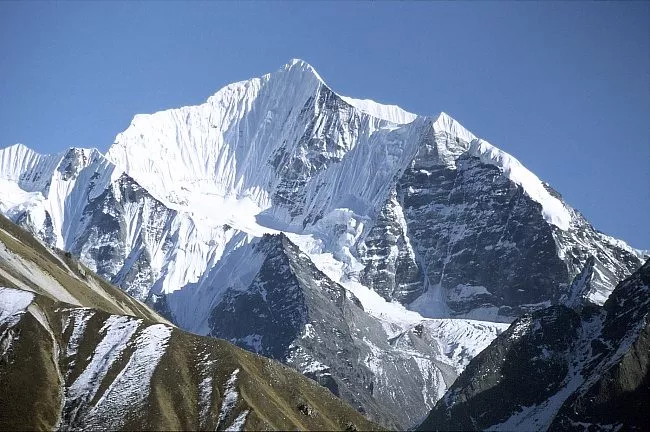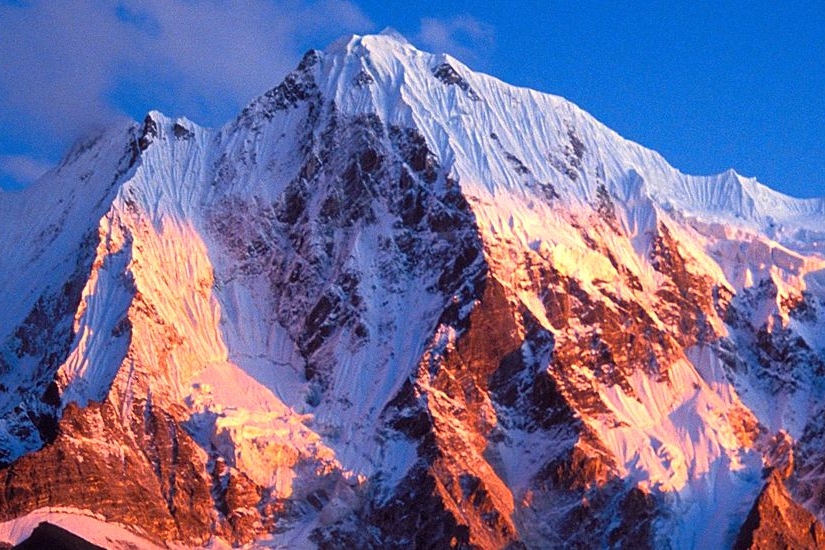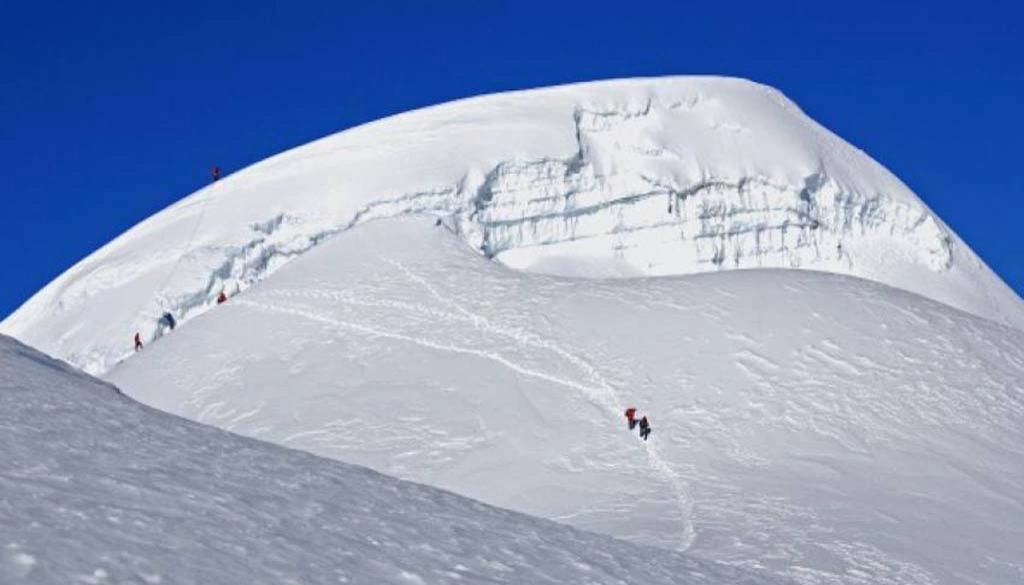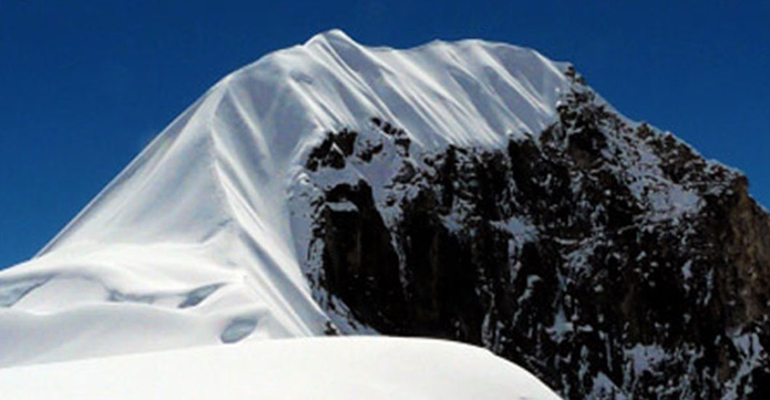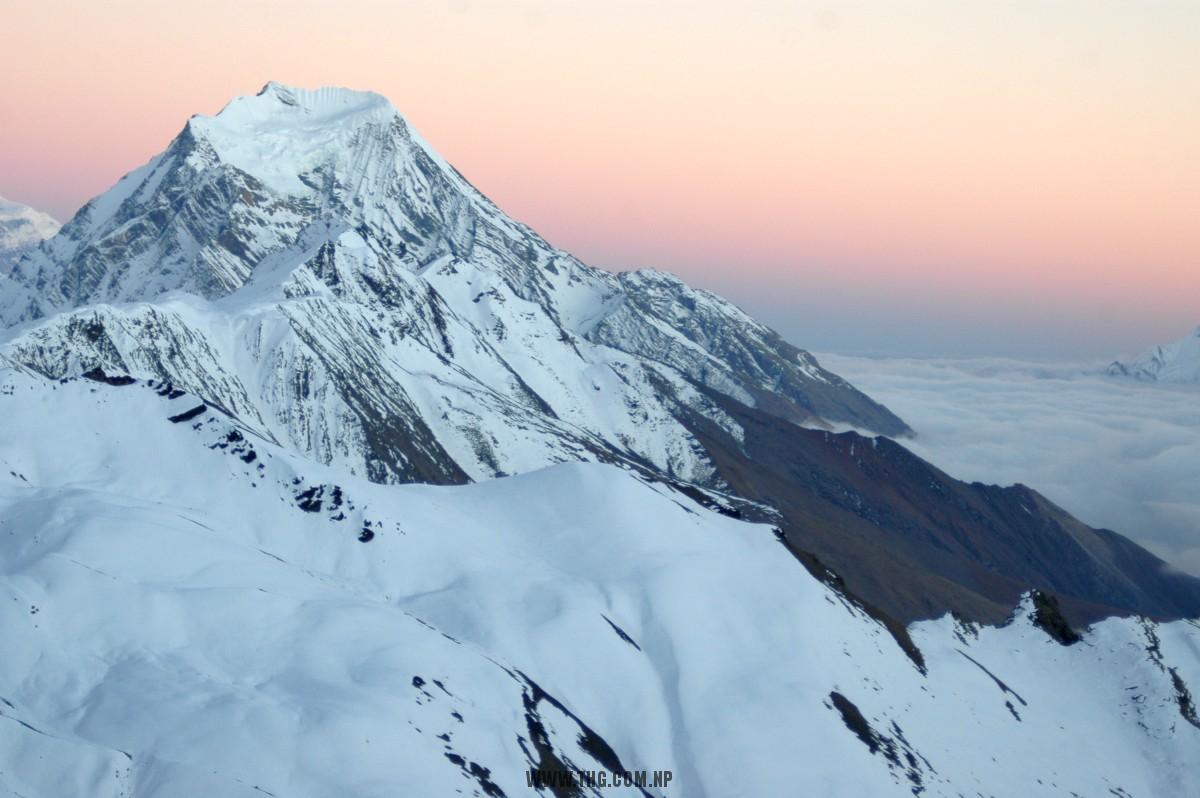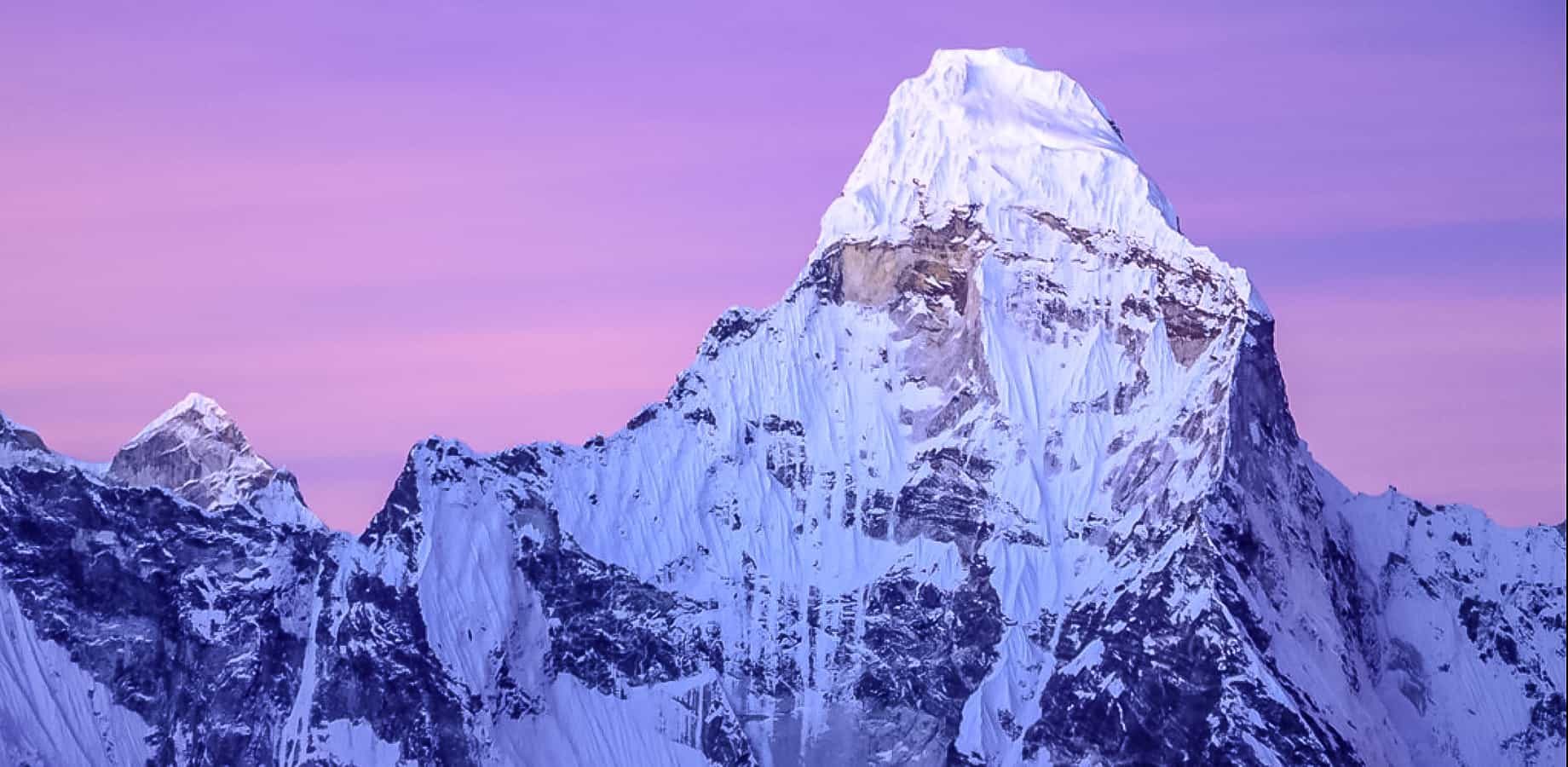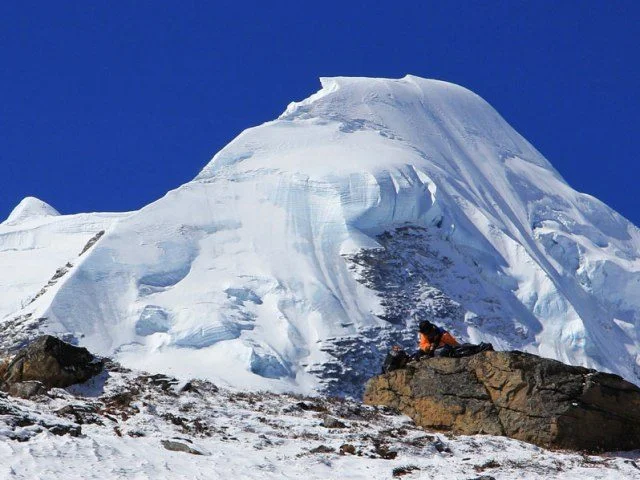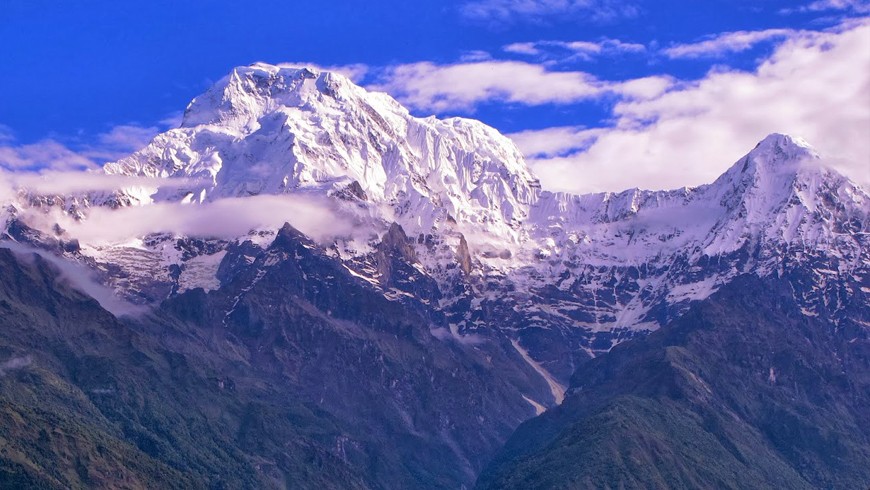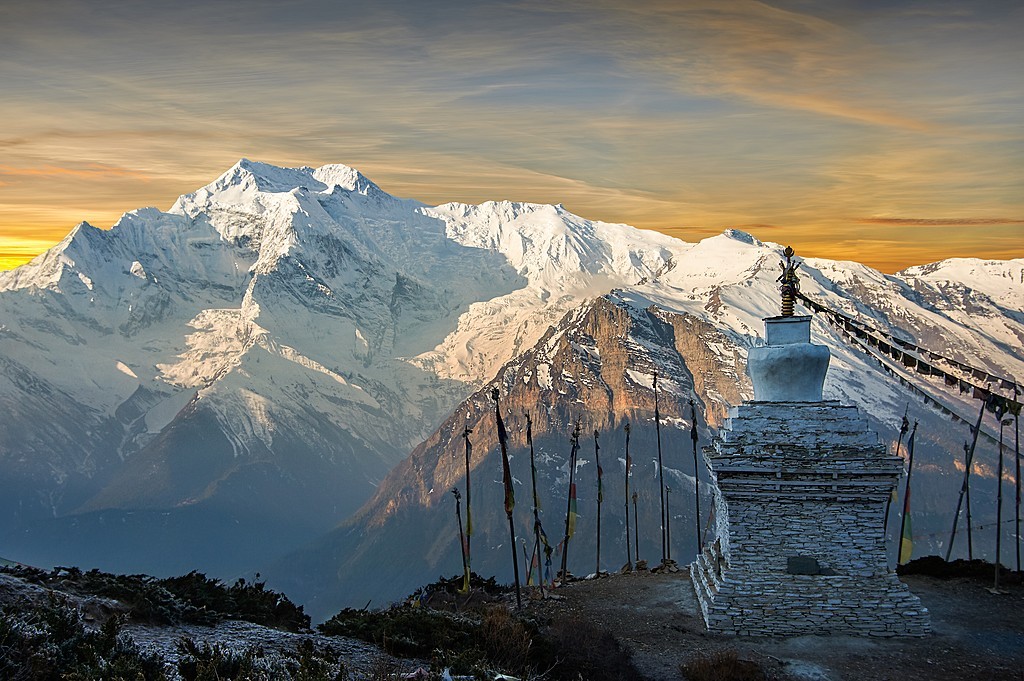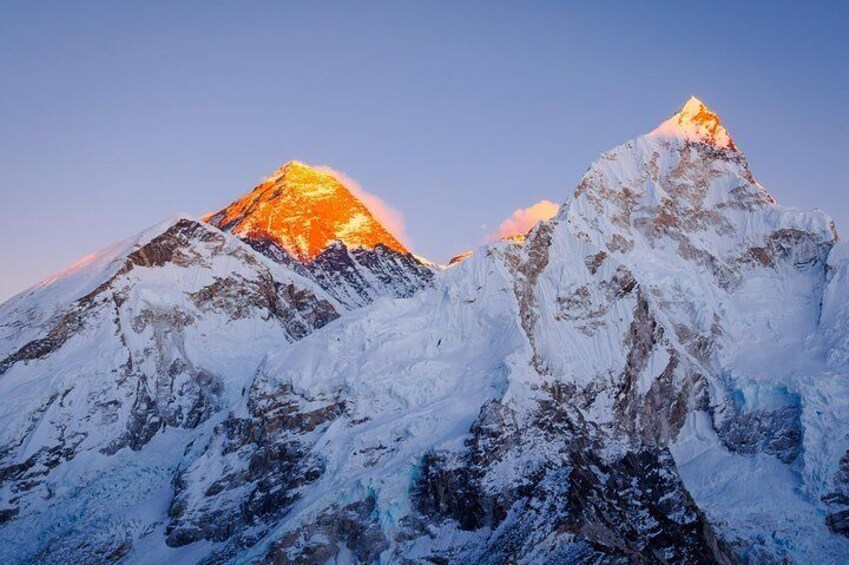Trip Facts
Highlights
- Conquer Yala Peak – the nearest peak climbing from Kathmandu
- Comparatively easier and more economical than other peaks climbing in Nepal
- Get all sorts of excitements of the Himalayas with a relatively shorter itinerary
- Trek to the Langtang Region with high mountains, more than 70 glaciers, ice-frozen lakes, and rivers
- Indulge with 3600 dazzling close views of Annapurna – II, Ganesh Himal, ManasluHimal, and Langtang Lirung (7,246m/ 23,773ft), DorjeLakpa (6,990m/ 22,933ft), Gangchempo (6,388m/ 20,985ft) and Sishapangma (8,027m/ 26,335ft)
- Most popular trekking region after Everest Region and Annapurna Region
- Meet Himalayan people (mostly the Tamangs and Tibetan descendants) and their lifestyle, observe Buddhist monasteries, architecture, and traditions
- Average physical fitness trekkers can easily accomplish
- Well-experienced licensed guides, strong porters, and supportive crew members
- Physically less challenging journey and heavenly natural pleasure – Collect lifetime experiences
- One of the most satisfying treks among all destinations in Nepal.
Overview
Yala Peak (5550 m) is one of the popular and easiest Himalayan climbing peaks in the Langtang region, located between the border of Nepal and Tibet, separated by a ridge.
With some prior outdoor trek skills, anyone with little experience in trekking can easily climb the peak. In some places, axes are required to ordinate, but nothing too dangerous or risky.
Yala Peak Climbing is a perfect site to adore the beautiful Himalayan ranges covered with snow throughout the horizon as well as experience the thrill to be on the top of the summit of Nepal Himalayas.
The peak climbing also offers great magnificent views of Langtang Lirung, Dorje Lakpa, Ganesh Himal, Naya Kanga Peak, Ganchenpo, and Shishapangma, etc.
Itinerary
Upon your arrival, we will greet you and meet you at the airport and take you to the Hotel. Introduction and briefing program about the trip.
We start the trip with the sightseeing to world heritage sites in Kathmandu including Kathmandu Durbar Square, Patan Durbar Square, Pashupatinath (temple of Shiva), Boudhnath and Swoyambhunath.
From Kathmandu, the Yala Peak Climbing itinerary begins with a beautiful journey to Syabrubesi. You will be contacted by a member of our team, who will pick you up from your location. After breakfast, you will be driven to the picturesque location where the journey will begin. Later, our crew will lead you on a trip along the Trishuli River’s route. The magnificent landscape of the towering mountains, such as Mount Annapurna, Ganesh Himal, Manaslu, and others, is truly breathtaking. To get to Syabru Besi, the visitors will pass through the picturesque landscapes of the area. You will tour the lovely locale and its surroundings after you have reached your destination.
Today, Yala Peak Climbing Trip will take you through some of the difficult terrains from the Syabrubesi to the Lama Hotel. The Bhote Koshi River is seen as the route winds through its surroundings. To get to your destination before it becomes dark, you will start the walk early. Beginning in a remote and difficult environment, the Yala Peak Climbing route leads to Lama Hotel. Along the way, you will stop at the Guru Rinpoche Gompa. After that, a stone-paved trail will take you through the Langtang Khola.
You will then continue your journey alongside the suspension bridge until you reach the Bamboo settlement. The Red Pandas, which are the trek’s highlights, are famed in the community. The oak, fir, and pine trees line the route as it goes into the woodland. You may also see several species of animals, such as black bears, monkeys, red pandas, Himalayan tahrs, and others. Before reaching the Lama Hotel, where you will spend the night, trekkers will pass through the towns of Rimche and other nearby communities. The region’s stunning scenery and atmosphere are both available for exploration.
Starting from the Lama Hotel, the Yala Peak Climbing Itinerary will take you through a variety of difficult terrains until you reach Langtang hamlet. The route then takes you to some of the most stunning vistas in the area. To get to the Langtang Khola, the path leads you through a forest filled with oak and rhododendron trees. The pathways are lined with fir and maple trees. The challenging hike then leads to a vantage point where you can see Mount Langtang Lirung (7244 meters).
To get to Ghora Tabela, you must traverse a number of suspension bridges. Before reaching Langtang, the Ghora Tabela paths pass by several mani walls, chortens, and prayer wheels. The Langtang National Park’s sceneries contain the charming community of Langtang. There are several flat-roofed homes with stone walls throughout the village’s hamlet. There are several sizable fields of buckwheat, potatoes, and barley. After reaching Langtang, hikers may take in the breathtaking surroundings and then unwind by spending the night there.
On this day, the Yala Peak Climbing path takes you through the breathtaking scenery of the area. This entails ascending steep slopes from Langtang hamlet to the Kyanjin Gompa. Also, the track goes by Buddhist landmarks including chortens, mani walls, and prayer flags. Before reaching the Mundu, you must climb a high hill on a cliff that leads through difficult terrain. The town is still situated at a height of around 3442 meters.
To get to the Kyanjin Gompa from Mundu village, you must go through a number of different communities, streams, and wooden bridges. From there, you will begin your trip while traversing stunning scenery and taking in the impressive icefall coming from Langtang Lirung. You may enjoy your snacks while seeing the revered Kyanjing Gompa. You might spend the evening at a tea house after exploring the lovely surroundings.
Your Yala Peak Climbing Itinerary indicates that today is an acclimatization day. For any high-altitude hike, the acclimatization phase is crucial. It will provide you with the capacity to adjust to high-altitude landscapes. Under these situations, the oxygen and air pressure are lower. So, you will be able to adjust to this location fairly quickly, which will allow you to enjoy the trails. The preparation for your ascent of the magnificent Yala peak, which you will perform on this hiking day, is equally essential.
The stunning area, including the monastery and its peaceful settings, is open for exploration. The monastery offers opportunities for spiritual reflection and nighttime chanting. Also, a former cheese factory is nearby where you may pause to sample some delectable dairy goods. As an alternative, you may trek to adjacent peaks for the greatest views of the Langtang Lirung glaciers. Trekking peaks like Kyanjin Ri and Tserko Ri are also accessible for climbers. One other great place to go on a side trip is Langshisa Kharka. You will then head back to your lodging at the Kyanjin gompa and spend the night there.
On this day, you will begin your trek from Kyangjin Gompa to Yala Base Camp in order to climb Yala Peak. Before reaching this stunning base camp, you must overcome a number of obstacles. The stunning paths provide you with fantastic chances for adventure. To get to Yala Base Camp, which is at a height of 4600 meters, you must take a number of routes. Views of the snow-capped mountains, such as the Ganchenpo, Tserko Ri, Naya Kanga, and Yala peak, will be magnificent. You can get the greatest views of the entire Himalayan panorama in the area from the Yala Base Camp. For the summit climb, which you will do with the assistance of your guide, you will also need to prepare carefully.
This is the most crucial day of the Yala Peak Climbing Itinerary since it is the day when the Yala Peak will finally be climbed. Early in the morning is when you will begin your ascent of Yala Peak. The summit is not very difficult to climb, therefore beginners with good physical fitness may do it. Ascending Yala Peak will provide you with a number of obstacles. With mountaineering tools, you will travel through many sectors. The mountains and other natural wonders of the Langtang area will be seen by you in breathtaking detail.
The journey to the peak and back to Kyanjin Gompa takes around eight hours. You can see all the adjacent peaks, including Dorje Lakpa, Naya Kang, Tserko Ri, Langtang Lirung, Shishapangma, Ganchenko, and others, from the summit’s highest point. You may take as many photos of the stunning area as you like, then you can return to the base camp and continue your descent to Kyanjin Gompa, where you will spend the night.
After an amazing stay at Kyanjin Gompa, it’s time to bid farewell to the lovely Buddhist community. Today’s stroll will be considerably longer than in the past. Before beginning the journey for today, you will have breakfast while admiring the views of the snow-capped peaks. Keeping to the same path, you will then return via the Langtang Khola.
You must go through well-known yak herding settlements and sizable alpine fields to reach Langtang village. Then proceed on and make a right turn toward Ghodatabela. From that, you rapidly descend to the Lama Hotel. You will check in the Lama Hotel’s most elegant teahouse. Afterward, it’s time to unwind and enjoy the view of pines and rhododendrons swaying in the breeze of the mountains.
Your Yala Peak Climbing trip will continue toward Khanjim after a delectable breakfast at the Lama Hotel. From Lama Hotel to Khanjim, it takes around five hours of walking on a generally downhill path. As you lose altitude, the trek is getting easier. Before descending to Khanjim, you will pass through Sherpa Gaon, where you may relax and observe the indigenous way of life.
After eating breakfast in Khanjim, you will travel to Syabrubesi, where your hiking journey will come to an end. The path you will take today will pass through bamboo and rhododendron forests and cross a few rivers on suspension bridges. Following your difficult travel, this is a simple and enjoyable stroll. You will check into a lodge as soon as you get to Syabrubesi for an overnight stay. You may also venture outside and take one more look around this spectacular location before departing for Kathmandu, Nepal’s capital.
Your journey to climb Yala Peak will finish today after you take a bus from Syabrubesi to Kathmandu. A substantial breakfast will be consumed before setting off on your return trip to Kathmandu, which will take you past terraced farms, small towns, rivers, steep slopes, and more. The lush, green trees may be seen as you go alongside the Trishul River. After a long day of travel, you will get to Kathmandu in the late evening. You must be worn out and want to unwind in your room after a long day. This evening, you might take some time to see the popular districts of Thamel. A farewell dinner in a typical Nepalese restaurant is held by Nomadways Adventure, in the evening to commemorate the successful completion of the excursion.
One of our staff members will assist you in getting to the airport when it is time for your flight to depart. If you want to extend your trip, Nomadways Adventure, however, can make the required arrangements. If your flight is scheduled for a late evening, you may also go shopping to get a few presents for your loved ones. We wish you good luck in your future travels to Nepal and hope you enjoyed your time with us. With this, we bid you farewell.
Cost Includes:
- All airport transfers
- Luxury Hotel in Kathmandu for two nights with breakfast
- All airport taxes
- All necessary paperwork and trekking permits
- Full meals: Breakfast, Lunch & Dinner of your choice
- Supplementary snacks: energy bar and cookies
- Seasonal fresh fruits desert every day
- Unlimited Chlorine treated Safe Drinking water
- Accommodation: Lodge
- A comprehensive First Aid kit
- Oxi-meter: To check heart rating and oxygen saturation to Everest Base Camp and return
- All government and local taxes
- Trekking equipment: down-filled sleeping bag, walking poles, and duffel bag
- Souvenir: Trekking Route map printed T-Shirts
Cost Excludes:
- Lunch and dinner in Kathmandu
- Hot and bottled drinks
- Electronic device re-charge Wi-Fi
- Hot shower
- Travel insurance and medical evacuation
- Tipping
Equipment
Trekking requires careful selection of gear to ensure comfort, safety, and efficiency on the trail. Depending on the conditions (terrain, weather, duration), the equipment you need may vary, but here’s a comprehensive list of essential trekking gear:
- Backpack
- Capacity: Typically, for a multi-day trek, a 40-60L pack is ideal.
- Fit: Adjustable straps for shoulder, chest, and hip.
- Features: Hydration system compatibility, side pockets for easy access, and a rain cover.
- Footwear
- Trekking Boots: Look for boots with good ankle support, durable soles (Vibram is a popular choice), and waterproof features.
- Trail Shoes: For lighter treks or well-maintained paths, trail shoes may suffice.
- Sock Layers: Merino wool socks or synthetic socks that wick moisture and reduce blisters. Avoid cotton.
- Gaiters: To keep debris, mud, and snow out of your boots.
- Clothing (Layering System)
- Base Layer: Moisture-wicking (synthetic or merino wool) long-sleeve top and bottoms.
- Mid Layer: Insulating layer, such as a fleece or down jacket.
- Outer Layer (Shell): Waterproof, windproof jacket and pants. Gore-Tex or similar fabrics are excellent choices.
- Trekking Pants: Convertible pants (with zippers for shorts) can be useful.
- Trekking Shirt: Lightweight, moisture-wicking, and quick-drying.
- Gloves: Lightweight gloves for warmth, plus an additional heavier pair if trekking in cold climates.
- Hat/Cap: A sunhat or beanie depending on the weather.
- Neck Gaiter/Buff: For sun protection, warmth, or dust.
- Sleeping Gear
- Sleeping Bag: Temperature-rated for the conditions you’ll face. Down bags are warmer and lighter but lose effectiveness if wet, while synthetic bags dry quicker.
- Sleeping Pad: Inflatable or foam pads that insulate from the cold ground.
- Tent: Lightweight trekking tents (1-3 person) that suit your conditions. Some options include 4-season tents if you're trekking in harsh weather.
- Hydration System
- Water Bottles: Collapsible or hard plastic bottles (ensure they’re BPA-free).
- Hydration Reservoir: Camelbak or similar bladder systems for easy access to water.
- Water Purification: A filtration system (e.g., Sawyer, LifeStraw) or chemical tablets to purify water from streams or other sources.
- Food and Cooking
- Stove: Compact gas or alcohol stove for cooking on the trail.
- Cookware: Lightweight pots or pans, often titanium or aluminum.
- Fuel: Compatible fuel for your stove (check for availability in the region you’re trekking).
- Food: Dehydrated meals, energy bars, trail mix, nuts, and fruits. Lightweight, high-calorie, and easy-to-prepare foods are best.
- Navigation Tools
- Map and Compass: Always have a paper map as a backup, even if you use a GPS.
- GPS Device or Smartphone with a Trekking App: Make sure to download offline maps.
- Altimeter Watch (optional): Useful for tracking elevation and route progress.
- Lighting
- Headlamp: Hands-free lighting for night-time use, with extra batteries.
- Flashlight: A backup to your headlamp.
- First Aid Kit
- Include basic supplies: Bandages, antiseptic wipes, blister treatment, pain relievers, and any personal medications.
- Personal Medications: Always bring enough for the whole trip, plus extras in case of delays.
- Sunscreen and Lip Balm: Protect your skin from sun exposure.
- Safety Gear
- Multi-tool/Knife: A good multi-tool (like a Swiss Army Knife or Leatherman) is very useful for repairs and emergencies.
- Whistle: For signaling.
- Emergency Blanket: Lightweight and compact for warmth in case of emergency.
- Firestarter: Matches or a lighter, and waterproof if needed.
- Miscellaneous
- Trekking Poles: Help with balance, reduce strain on knees, and improve traction on uneven terrain.
- Towel: Quick-dry, compact towel.
- Sunglasses: UV protection for your eyes.
- Camera/Smartphone: For documenting the journey, with extra storage or a portable charger.
- Personal Hygiene and Toiletries
- Toilet Paper: Always carry biodegradable toilet paper and a small trowel for digging a "cathole" if there are no facilities.
- Hand Sanitizer: To keep clean without access to water.
- Wet Wipes: For cleaning yourself when there's no shower.
- Biodegradable Soap: If you need to wash, use eco-friendly soap.
- Toothbrush/Toothpaste: Compact travel versions.
- Weather Protection
- Sun Protection: Sunglasses, sunblock, and a wide-brimmed hat for sun protection.
- Rain Gear: A high-quality waterproof jacket, pants, and gaiters, especially if you're trekking in areas with unpredictable weather.
- Cold Weather Gear (if needed): Depending on the trek, you might need additional gear like down jackets, insulated gloves, or even crampons for ice or snow.
- High-altitude Treks: Consider gear for altitude sickness (like Diamox), extra layers for extreme cold, and an oxygen system if necessary.
- Long-distance Treks: You might need additional gear like extra food storage, a larger stove, or a lightweight trekking umbrella.
FAQ's
Yala Peak (5,732 m/18,806 ft) is a trekking peak in the Langtang region of Nepal. It is considered one of the easier peaks to climb and is popular among beginner climbers looking to gain their first Himalayan mountaineering experience.
The climb is graded as PD (Peu Difficile) in the Alpine grading system, meaning it is moderately difficult. While technical skills are not heavily required, climbers should be physically fit and comfortable using basic mountaineering equipment such as crampons, ice axes, and ropes.
Prior technical climbing experience is not mandatory, but basic knowledge of mountaineering and familiarity with equipment like harnesses, crampons, and ice axes will be helpful. Physical fitness and endurance are essential.
